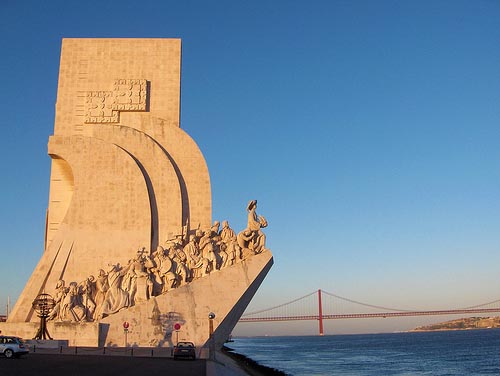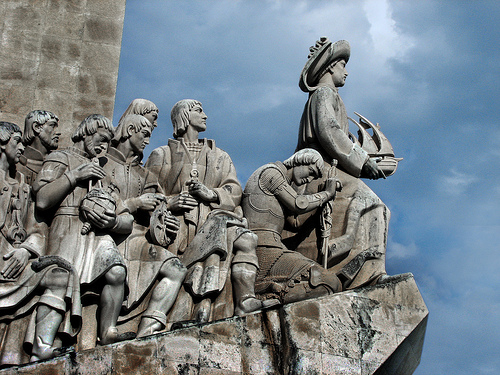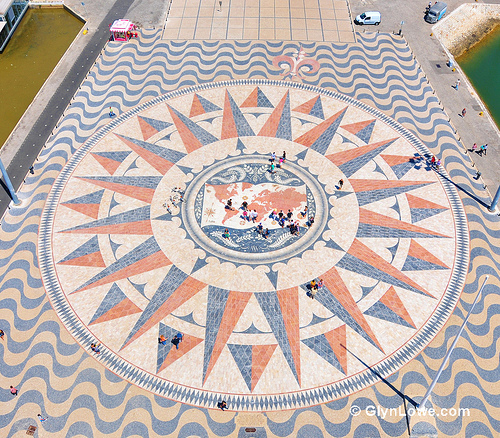Besides sites that are world-famous because of their uniqueness, like famous museums and architectural marvels, every tourist just has to visit places that have strong cultural and historical significance.
Monuments and memorials in Lisbon are often grouped under this category. In fact, one of the best ways to learn about the nation is through studying their statues and monuments. It’s natural, nations honor people who are or were very important to them.
From this point of view it can be thought that the discoveries made by Portuguese thinkers and adventurers are to crucial importance to this nation. Moreover, they are so important that Lisbon offers one of the most inspiring monuments to its tourists: The Monument of Discoveries.

The monument, which features a ship sailing in the wind, was first unveiled in 1940 at World Exhibition. However, it was taken down later, only to come back as a permanent monument facing the river Tagus.
The current monument was presented to the public in 1960 for the 500th death anniversary of Henry the Navigator. Despite the fact that there are 30 prominent Portuguese men, which have in some way contributed to the culture of this country, the main role is given to Henry the Navigator.
The main idea of this 50 m high monument is related to the Age of Discovery, which began in 15th century, when the Portuguese captured the city of Ceuta, North Africa. However, this was just the beginning. Later on, in the 16th century Vasco de Gama (another prominent name in Portugal’s history) discovered a new route to India, moreover, Pedro Álvares Cabral discovered Brazil (now, this is something to appreciate).

People all over the country are extremely proud of these events, and it’s no surprise why this white monument, as impressive as the discoveries once were, stands in the capital city of Lisbon.
Those 30 people stand on a Caravela ship (the most common ship during the Age of Discovery, this type was used in the most of maritime discoveries). Although the main hero is an explorer, the rest of the “crew” represent other sphere of Portuguese success: King Manuel I, Luís de Camões (great poet, the Shakespeare of Portuguese literature), Felipa of Lancaster (Henry Navigator’s mother and the only female on the ship), Vasco de Gama (an explorer), Ferdinand Magellan (explorer who has first ever crossed the Pacific Ocean, the Straight of Magellan named in his honor), and so on. Each one of those figures, the majority of which are buried in the National Pantheon of Lisbon, is holding an item expressing the essence of their discoveries.

The square, located right in front of the Monument of Discoveries, displays a huge mosaic compass with a map. The map lines up the routes which Portuguese explorers used to sail. This mosaic picture is a present from the South African Republic in 1960.
You will need only half an hour to walk around the monument, study the details, and take some photos. The Museum of Popular Art is very close to the site, so you can combine these two destinations and plan them on the same day. The admission fee to the Monument of Discoveries is only 2.5 Euros.
This monument is one of the most beautiful tourist attractions in Lisbon, and the most useful one to understand the history of the city. It’s a candle for those great men that made Portugal one of the richest and most important countries during the Age of Discovery.


